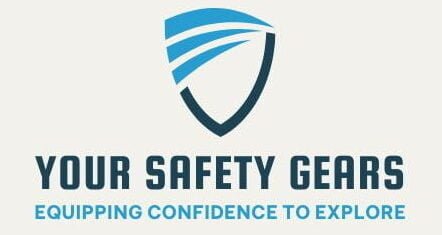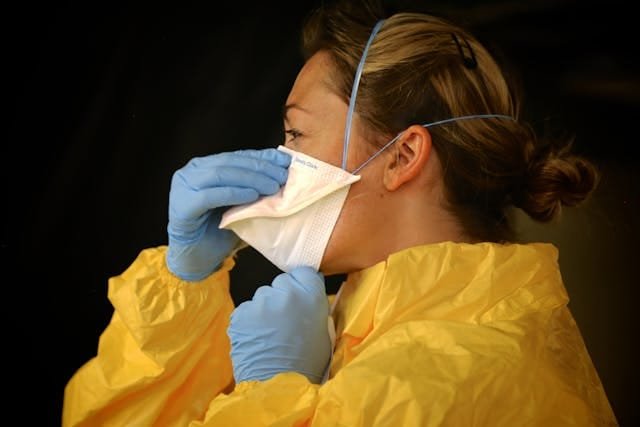Personal Protective Equipment (PPE) is a vital element in workplace safety. PPE acts as a defensive effort against hazards present in the workplace. Employers must ensure PPE meets set standards and regulations to improve worker protection and fulfil legal obligations required by safety authorities.
Explore the details in this article to understand how you can establish and maintain an effective PPE program to safeguard your workplace.
7 Steps to Ensure PPE Standards and Regulations in Your Workplace
Ensuring a complete PPE program in your workplace involves several steps. The major steps this process entails include:
1. Assessment of hazards
You must first identify hazards present in the workplace that could lead to minor or life-threatening injuries. Conducting a hazard assessment involves:
- Consulting workers – seeking input from workers who perform tasks in hazardous environments,
- Workplace inspections – perform thorough physical assessments of the work areas and view tasks being performed,
- Review of accident records – complete an analysis of past incidents to spot potential workplace hazards
Identifying hazards will help you identify the right personal protective gear your workers need.
2. Choose the right PPE
Selecting the right protective gear is important to ensure effective safety measures. You must consider these factors while choosing PPE:
- Hazard type – select PPE with a design to protect against specific workplace hazards,
- Comfort – pick protective equipment that cause minimal or no discomfort during use,
- Maintenance – consider how easy the PPE is to clean, replace, or repair,
- Fit – tight or oversize PPE may not provide the right protection. You should consider factors like size, compatibility, adjustable features, and more while choosing protective equipment,
- Durability – ideal PPE must withstand conditions of the work environment
See the table below for different types of PPE and hazards they aim to protect against:
| Type of PPE | Hazards |
| Eye and face protection | Impact, dust, chemical splashes, radiation |
| Hearing protection | Noise |
| Head protection | Impact, falling objects |
| Hand protection | Cuts, abrasions, chemical exposure, temperature extremes |
| Foot protection | Impact, compression, punctures, chemical exposure |
| Respiratory protection | Dust, fumes, gases, vapors |
| Body protection | Chemical splashes, extreme temperatures, cuts, abrasions |
3. Provide use training
Proper training is vital to make sure workers understand how to use PPE the right way. Protective equipment training should cover:
- Necessity – explain the hazards that exist and why PPE should always be in use while in such environments,
- Basic use – show workers how to put on and remove protective gear. Also, explain how to use PPE along with other existing safety procedures,
- Maintenance – inform employees on best practices to inspect, clean, and store protective equipment, and
- Potential limitations – explain potential areas where PPE may not be the best substitute for other safety measures.
Regular refreshers are necessary to ensure the reinforcement of these concepts.
4. Create a PPE program
A well-written PPE program is important to formalize your sustained commitment to safety in the workplace. The safety program should include:
- Documentation of identified hazards in the workplace,
- Specifications of PPE types required for each hazard,
- Outlining training requirements for using protective equipment,
- Description of how to maintain protective gear
Your program should also have defined timelines for review and updates to meet set safety standards.
5. Ensure proper storage and maintenance
You must properly maintain and store protective equipment to ensure they remain effective and serve their purpose for longer. Measures to perform regular inspection, repair, cleaning, and storage of PPE ensures reduced resource wastage.
6. Establish PPE use enforcement
Enforcing PPE use ensures workers comply with existing safety requirements in the workplace. Ideal ways to enforce these rules include:
- Establishing clear rules to communicate PPE requirements to all employees,
- Supervising workers to ensure they engage proper use of protective equipment,
- Addressing non-compliance by taking appropriate action whenever workers fail to use protective gear, and
- Leading by example through ensuring managers and supervisors using PPE in required areas around the workplace
7. Perform regular reviews/necessary updates to PPE program
Frequent reviews and updates to existing PPE programs ensure effective safety measures are always in place. You can ensure efficient reviews and updates through:
- Assessing changes in the workplace – new equipment, renovations, and any potential change that could introduce new hazards should receive proper attention. Adjustments to your company’s existing PPE program may be necessary to avoid accidents triggered by changes in the workplace,
- Seek staff input – your workers should provide feedback on the effectiveness of your PPE program,
- Incident investigations – analyze incident reports to spot areas where improvements to the PPE program are necessary.
What Do PPE Prevent in the Workplace?
Protective equipment ensures workers are safe from various hazards that include:
- Physical hazards like extreme heat or cold, abrasions, cuts, and other potential injuries,
- Exposure to harmful chemicals that may cause negative effects through ingestion or contact with skin,
- Radiation hazards that could expose workers to different levels of harm, and
- Biological threats like fungi, viruses, and bacteria
Top Regulatory Bodies and Published Standards
The top organizations that develop and enforce PPE regulations and standards include:
- European Committee for Standardization (CEN)
- International Organization for Standardization (ISO)
- National Institute for Occupational Safety and Health (NIOSH)
- Occupational Safety and Health Administration (OSHA)
These organizations publish various standards that specify the requirements for different types of PPE. For example:
- ANSI Z87.1 is an safety American standard that covers eye and face protection.
- EN 166 is a European standard that specifies requirements for eye protection.
Conclusion
You need to make sure PPE standards and regulations in your workplace are up-to-date. Ensuring proper use of protective equipment helps prevent avoidable accidents during operations. Conducting hazard assessments and selecting appropriate protective equipment ensures workers get the required tools to carry out their duties effectively.
You can create a safe working environment by initiating a standard PPE program and ensuring adequate maintenance and storage of equipment. PPE isn’t just protective gear; it’s an essential feature in a safety-conscious workplace that ensures the wellbeing of all employees.




